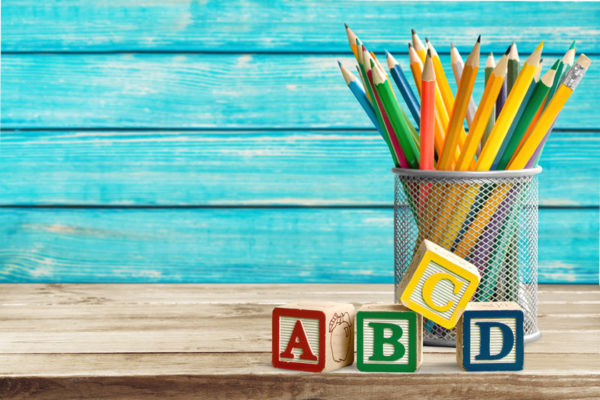Education has always been my passion. I have studied it since I was 14. I have worked as a teacher since I finished high-school and I have become acquainted with many teaching styles and philosophies from which I have learned and developed my own. What I believe in, when it comes to educating children, comes closest to the progressive education.
Reggio Emilia, Waldorf (Steiner) and Montessori are the most popular progressive schools. What they all have in common is the focus on the whole child (they are all child-centered approaches), the importance they give to the community, to collaboration and deep understanding and my favourite of them all…drum roll… the interest in the intrinsic motivation rather than rewards.
In this post, I would like to focus on Montessori Education because some of my mum friends have asked me about it. When I think of such a classroom, I see a very organised and tidy space in natural colours, children working individually or in small groups on the floor or at a small table, materials carefully arranged on tiny shelves, small children setting the table, pouring water, cutting bread, and almost invisible teachers.
Beside the characteristics it has in common with all the progressive schools I have already mentioned, what I love about Montessori is:
#1. The Age Groups. Montessori places children in three-year-or-more age groups. Assistants to Infancy (0-3) Casa dei Bambini (3-6) Elementary (6-12) and Adolescence (12-18). They form a community in which the younger children learn from the older ones, who share their knowledge. Children learn together, from each other, inspire each other, and collaborate instead of competing. The teacher is just a guide and an observer.
#2. Active Learning. Students take ownership of their learning. They choose what they want to learn and they are guided, not led by the teacher. Children play a vital role in helping to design the curriculum. They are challenged according to their needs and abilities. There are no textbooks, no worksheets, no grades! The teacher intervenes only when children ask for help and guides them so they come up with a solution, rather than doing things for them. When someone is not able to complete a certain activity, or if they do it “wrong”, they are not corrected, nor interrupted. They will try again later when they are ready for it. There are no academic requirements for early years but children do learn how to write, read, and do Math, at their own pace, with no pressure. Montessori children are given the opportunity to learn real-life skills. Little kids spread their own jam on bread, pour water, set the table, do dishes, sweep, water flowers, etc.
#3. The Environment. Dr Maria Montessori noticed that children grow best in an environment that addresses their needs. The educational resources in the classroom are on low shelves, in designated places, so they can be reached/found by everyone. There is only one item of a kind. Every learning material has a purpose and it is very specific. There is no limit to how long a child can work with a piece of material. Auto-discipline plays an important role here, as children focus on activities that were not imposed, but chosen by themselves. The furniture is also adapted to kids’ size. A child is free to move from one space to another and he/she is not restrained to one area. That is why in Montessori schools there are no highchairs and cots from where children can’t get out. Instead, they offer small chairs and tables, and mattresses on the floor (for naps).
It sounds amazing so far, right? However, there are a couple of things I am not very impressed with when it comes to Montessori method.
– 1. Any School Can Be Called Montessori! That’s why there are so many Montessori Schools that do NOT respect the Montessori philosophy. They are packed with bright plastic toys, highchairs, playpens, fairytale books and have funny group ages! Some of them are even called academies! Maria Montessori didn’t even want to name them schools, but “Houses of Children”! She would turn in her grave if she saw all these!
– 2. No Pretend! All of the learning materials (they are not called toys) in the Montessori schoolroom were designed by Maria Montessori for a specific academic purpose. They have natural colours and they are almost all made of wood. The books have no caricatural pictures but real photographs and they are mainly non-fictional. Children’s activities are referred to as “work”, not play. Every single activity the children are involved in needs to have a learning purpose. They can’t just play for the sake of play. Or just for fun. There are is no pretend play! No fairies, no knights, no dragons! Boo!
But at the same time, there is no perfect school, remember?
I’ll end on a happy note, asking what do Prince Harry, Prince William, Gabriel Garcia Marquez, the founders of Google (Larry Page & Sergey Brin) and Sean ‘P.Diddy’ Combs, have in common? (That’s right! The answer is Montessori education.)
